Years ago, I heard this gem of a phrase regarding money and business, “You don’t get paid what you are worth; you get paid what you negotiate.”
The agreeable value of what you sell is always in the other person’s eyes. It doesn’t matter what it is. It could be your time, as with a job. Maybe it is with a product, such as a decorated t-shirt. It might be with software, a subscription service, or an hour with a coach to learn a new skill.
When people agree to purchase something, it often is less about the list of benefits and more about the emotional connection to something. So the difference between buying and not buying may come from a feeling about something.
Why do you own your particular car or blue jeans or like your favorite restaurant? I’ll bet there is an emotional connection locked into place that far outweighs the money being spent. It is a fact that people will pay more for an emotional connection because of its perceived value.
Sure, there is a baseline that has to be delivered. The thing has to work or provide the primary function of what is being purchased. However, people will line up around the corner for things that trigger an emotional response.
Low price is the safety net for people who don’t know what they are doing.
Newer people or shops in the industry seem to always begin their journey by low-balling the market on price. When you don’t have confidence in what you do or the value you bring to the sale, it seems logical.
The problem is that it usually spells disaster for the new business, as there isn’t enough money available to scale. This is a no-win strategy for growth and profitability as it only attracts customers whose sole focus is cheap prices and not much else.
If you are stuck on the pricing question, try organizing your business based on selling what your customers VALUE instead.
Trust me. Anyone can decorate a t-shirt or slap a logo on a polo. It’s not that difficult. But why be a commodity? Instead, ask better questions to your customers to uncover their problems and the emotions tied to those problems. That’s a gold mine.
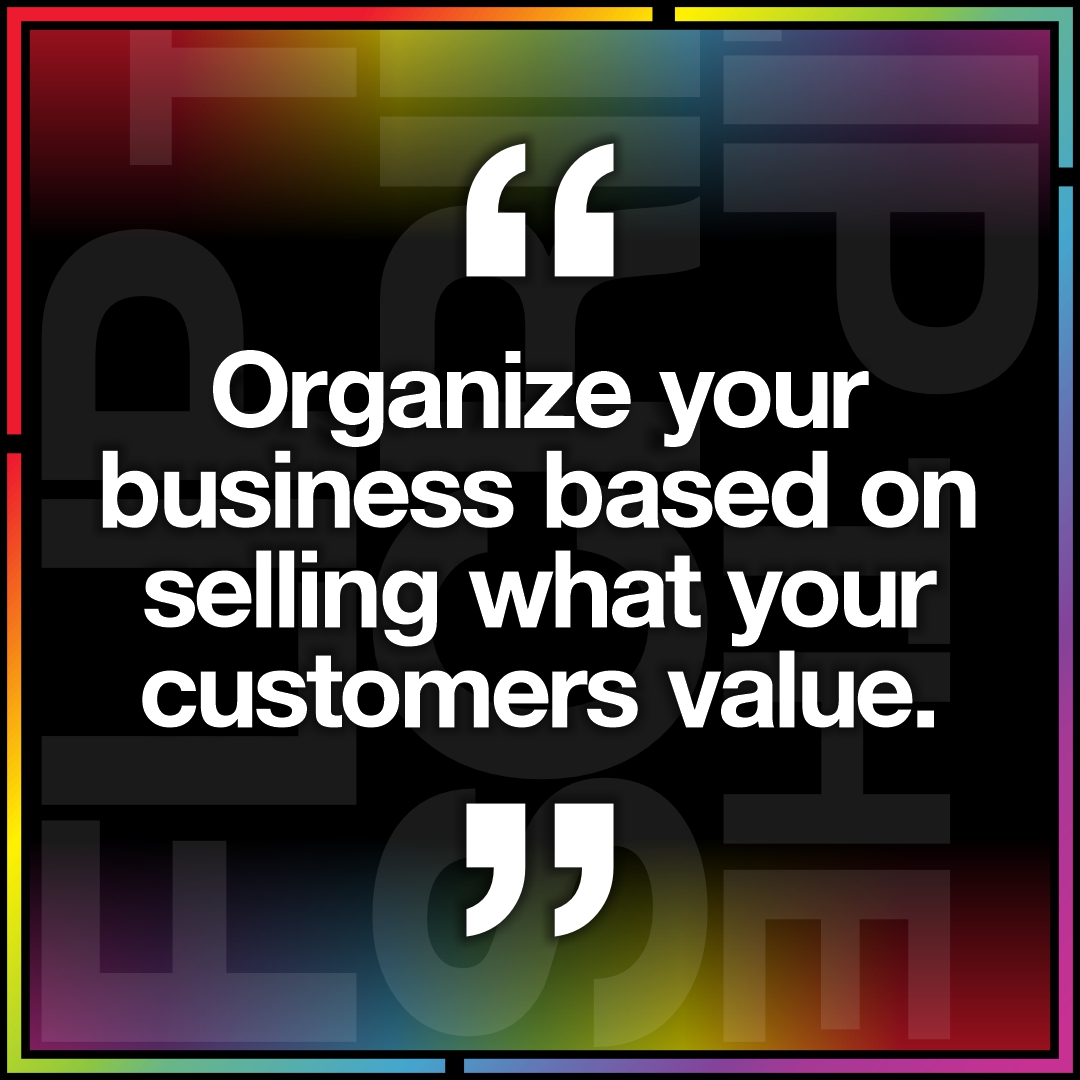
Hank is the head football coach for one of the local high schools. He has been on the job for two years now and is entering his third year coaching the Lions. Hank was an assistant and took over after the legendary football coach retired. They are prepping for a tough year as the cross-town rival is already ranked in the top ten in the state, and he mostly has a team full of younger players.
Challenge question: What is Coach Hank’s problem?
Of course, you would ask him many questions to uncover this, but for the sake of argument, let’s say we have the answers already.
Coach Hank wants to make his mark. He knows what it is like to have many years’ worth of successful teams, as he has been part of that with the former coach. Now it is his turn, and he has a lot of pressure to deliver. His legacy is starting now.
There is a challenging year ahead, and he is coaching a group of underclassmen. He knows he can coach but needs some tools to motivate the players.
What he doesn’t have is time. He needs to be studying game film and working with his team, not worrying about t-shirt orders and designing. This is where you come in.
The first step is to update the classic school Lions logo with a more modern, aggressive look. Coach Hank’s new motivational motto this year is “Lion Pride,” so a bold graphic is created. This not only becomes a helmet sticker and jersey patch but is worked in as a neck label for all of the apparel for the team and fans.
The team colors are Red and White, but unique Black versions of the apparel are made for special “big-game” usage. New versions of the logo are on everything, as well as the bold Lion Pride graphic. In addition, a unique “Hall of Fame” line of apparel is designed for former players and coaches, creating social media buzz.
An online store is created both for the team and for the fans. This helps get the sizing right for the team and is a fundraiser for the school’s boosters. In addition, the new logo and colors increase sales because students and fans suddenly look out of fashion with the old version.
Look at the list of the ten emotions above.
How many emotions play a part in the value-based decision-making for Coach Hank? When you present your ideas, this is what you talk about. Price matters, but not as much as saving the coach time or motivating his team and fanbase. Those are the selling points that get the coach excited and moving forward.
Solving these emotional challenges is what builds a strong relationship that can’t be beaten. When you deliver for a customer and start hitting these emotional traits, that’s when customers sing your praises.
Don’t forget to get Coach Hank’s testimonial video for your marketing reel later!
Maria is the HR manager for a large building contractor, employing over 1,200 people in four states. Her time is spent on safety, new hires, payroll, and employee legal problems. The marketing department has recently rebranded the firm, and now Maria needs to overhaul the business uniforming from scratch. Unfortunately, she has a large budget, a deadline, and not much else.
Challenge question: What is Maria’s problem?
Maria needs dependability. Her reputation is on the line with her decisions, and she can’t afford to make mistakes. She needs assurance, safety, and proven data that indicates the decision she makes is a good one.
The value that Maria is looking for is trustworthiness. With the rebranding, so much is at stake that she can’t afford a misstep. She knows the trust she seeks may even come at a higher price for the items, which she will gladly pay.
This is where sharing stories of past successes with similar employee uniform and merch stores, customer testimonial videos, and a solid guarantee can ensure the deal goes through.
Maria’s emotional trigger is Fear. Trust is gained by being transparent and complete with how the program will work, answering all of her questions, and demonstrating professionalism. She is searching for a partner that can automagically drive the program without a lot of daily involvement by Maria.
Your expertise with garment sizing, fit and finish makes a big impression. As you know that Maria has to deliver this program, your preparation pays off as you confidently answer every question. Then, it is simply a matter of working out the details of the program and executing it as orders flow in.
Of course, we could write plenty more scenarios, but you get the idea. Both Hank and Maria are not isolated customer cases.
Your customers right now are looking for the things that they value most. How often have you asked your best customers, “Why do you do business with us?” This is critical information when thinking about selling on value.
If you asked 20 or 30 of your best customers why they do business with your company, what do you think the most popular answers might be? (Hint: This is your homework for today.)
Customers want to align themselves with companies that are like themselves or fill the need for that emotional trait.
What can make you unique in your market is to demonstrate the emotional traits that your customers value. This means that you must be situational aware to recognize what your customers value most.
The purpose of marketing is to cause change. In this industry, the best idea is to quit trying to find customers for your product or service. Instead, flip the script. Build products or services for your best customers that they value already. Word gets around. A little marketing helps too.
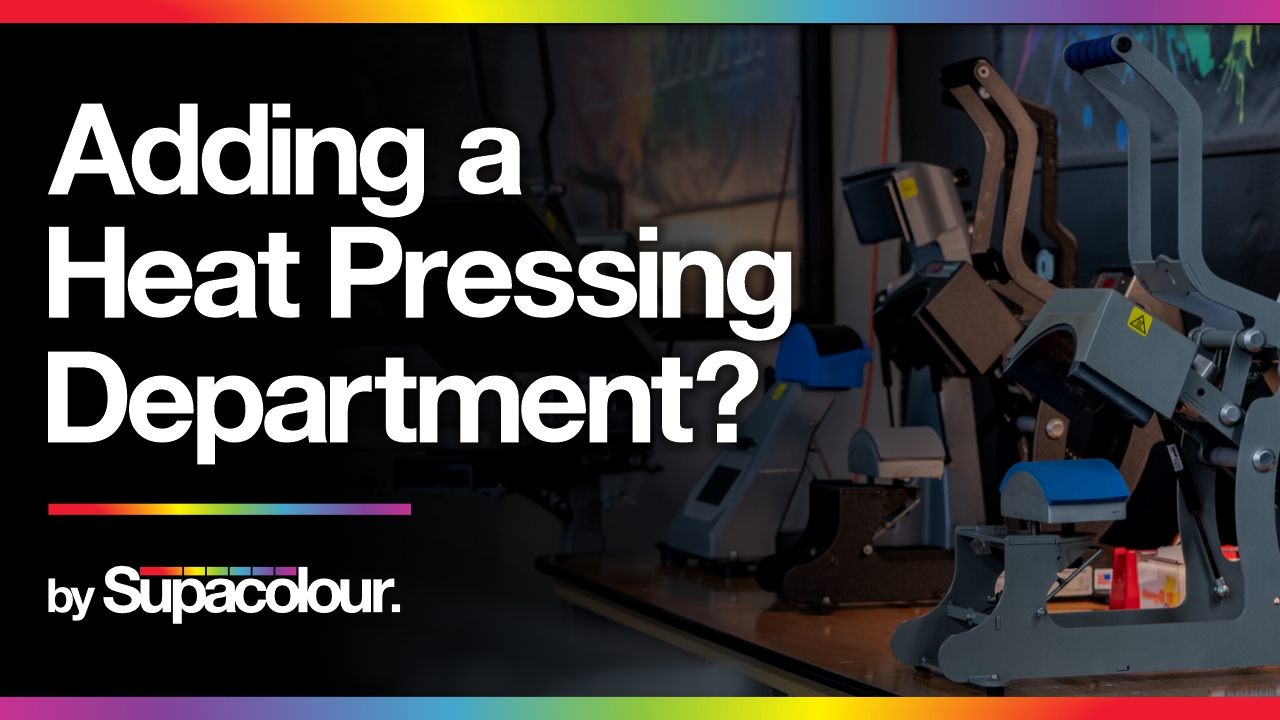
Incorporating a heat-pressing department into your screen-printing business can change the way you think about your operations. Taking on low minimum jobs and high colour counts can evolve from being an inconvenience to a great way to increase your revenue. But where do you get started? Don't worry; we're here to help.
Whether you're adding a heat-pressing department to your large-scale venture or looking to start a business from the comfort of your home, there are tools for every budget and every garment decorator. With the right equipment, you'll be well on your way to increasing your business's bottom line.
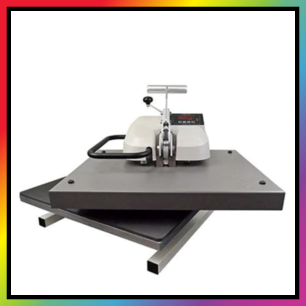
Manual heat presses have basic, yet essential, features that require the operator to use physical force to open and close them. Manual presses have limited functionality, but they are a great way to get in the game because they are available at a lower-cost entry point.
When buying a manual heat press, look for one that has an auto-open feature, as this will eliminate some of the necessary physicality.
Utilizing optional platens helps to solve the problem of printing on awkward items. You can swap out platens for different jobs, such as garments with zippers & buttons, as well as shoes or bags.
This will make heat pressing different items a much easier process.
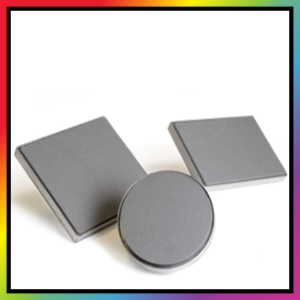
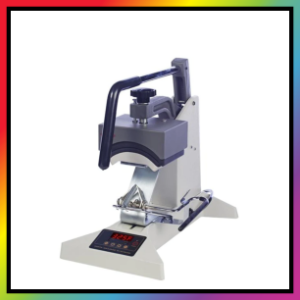
Specialty presses are available for pressing headwear, neck labels, bags, shoes, and other items. Specialty presses can help you further build your decorating business by giving your shop enhanced customization capabilities.
Don’t be limited to just printing t-shirts; you can charge an even higher premium for printing unique items.
Air-operated presses run off compressed air and do all the heavy lifting. These presses feature programmable settings that your machine will be able to memorize. With the click of a few buttons, the press platen will drop, apply consistent pressure and heat, then rise when the dwell time has been completed.
Air-operated heat presses help avoid operator fatigue and repetitive injuries that can be caused by manual heat presses. They allow your employee to maintain focus for longer and achieve greater productivity. Air-operated heat presses come in single station, dual station, and multi-head station setups. The more stations, the more volume produced.
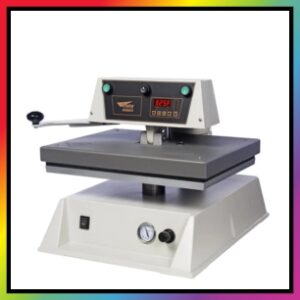
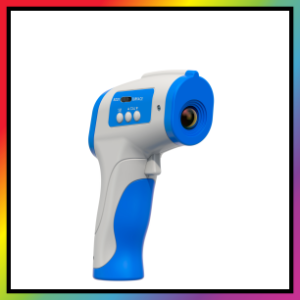
A temperature gun uses an infrared beam to detect any discrepancies in temperature on different areas of your heat press.
Cold spots on your platen may cause inconsistencies in your print quality, so it’s important to ensure the temperature is evenly distributed.
If you’re just starting out, or if you need to secure your transfer onto an awkward shape, heat tape will keep things locked in the position you desire.
Eliminate mistakes caused by shifting transfers by using tape specifically designed to withstand extreme temperatures.

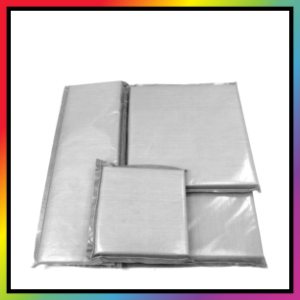
These special pads can be positioned on the bottom platen of your press and will act as the surface for your garment. These are useful when dealing with bulkier items as they help distribute the pressure more evenly.
Magic Touch, Adkins and Sefa all are reputable vendors that sell a variety of heat pressing equipment and accessories.
Good luck with your heat pressing venture, and let us know how else we can help you make it. Email us at hello@supacolour.co.uk
How often are you thinking about credibility? Let's consider that from the viewpoint of the only people that matter: your customers. Credibility is simply Trust, with a capital "T."
Customers either trust you, or they don't. What are the essential tips for building credibility? So let's review seven things you need to foster more credibility with your customers.
There is only one you. People respond well to sincerity. What makes your company different from everyone else out there?
Your brand's voice is what gets noticed. When it feels genuinely authentic, customers respond positively by aligning themselves with an emotional attachment to that brand. They see themselves in it somehow.
This is the power that Apple, Harley-Davidson, Nike, and Peleton wield.
The reason why they dominate their market category is that everything they do is authentic to their brand. If you removed their logo from their marketing, I'll bet you would still think of them looking at the piece.
What makes your company authentic? It has to resonate truthfully with your customers. Take the brands that you enjoy in your life. Why do you always buy that same ice cream, car, phone, or shoe?
Authenticity isn't about price. It's about emotional alignment. That is what strengthens the credibility of your company with the customer.
Are you there for your customers? This is both from the customer service and a foundational emotional standpoint.
For example, let's say a client had a problem. What are the lengths you would go to solve it? Are you flexible enough to offer alternatives?
Yes, I realize that "client has a problem" is probably too general, but are you looking at the challenge from their point of view?
For example, a few years ago, a time-sensitive apparel order for an event was aboard a FedEx plane that crashed. We completely reordered and produced a duplicate order and got the shirts for the event in time to be handed out. Our actions said, "We got your back" more than anything that could be verbalized.
This is how not only lifelong customers are created, but ones that become your most significant marketing champions out there in the "real world."
What actions are you taking to generate this type of credibility daily?
If there are any lessons that someone could take away from the COVID pandemic is that everything can change instantaneously. Basically, as soon as the NBA canceled their games in March of 2020, the entire world seemingly followed suit. Imagine professional basketball being the canary in the coal mine for trends in health and safety!
What followed was chaos. Entire industries were wiped out. Workers everywhere were disrupted.
Embedded in that chaos, though, were opportunities. People willing to do something new or change how they operate found success. For some, that genie isn't going back into the bottle.
This happened by experimenting and learning. Being open to change, trying new things, failing, and then improving.
It all happened relatively quickly too. FYI, to this day, my family still orders our groceries on a tablet, swings by, and picks them up. Now, it has less to do with health reasons and more to do with the convenience factor.
Were all the orders perfect? Of course not. But, the credibility happened when they made things right. Or suggested alternatives.
What is interesting now is that the stores are learning what we order. Occasionally, some free samples are tucked in with the order for products to try. They know that as consumers, we are not wandering around the store looking at the end cap displays or drifting by the free sample table.
Once you understand your customer and have some data, what are you doing with that? How can you apply what you have learned from them to build a better relationship or sales engagement?
I shouldn't have to say this. As we all know, "Honesty is the best policy." However, when stressed, people throw out all sorts of words that may or may not be entirely valid.
Remember this. It is ok to say no.
Customers and employees would rather know the truth in a situation than a mealy-mouthed excuse as to why something can't happen.
For most of my entire career, I've been on the operational end of the stick. Salespeople are notorious for agreeing to things not based on actual physical reality. Why? Because they don't want to "lose the sale."
They agreed to that rush order, even though the production schedule was already overbooked. They don't have to stay late to get it out, so why not? But when push comes to shove and that order misses the ship date, all that happens is a lot of finger-pointing internally and a customer that doesn't trust you.
Want more credibility?
Don't agree with things that aren't feasible. For example, "I'm sorry, checking our schedule, it looks like Friday won't work, but the following Thursday shouldn't be a problem." Maybe the customer needs that order on Friday, but perhaps Thursday is just as good.
But when you use the truth in the situation as a guideline, you are not setting yourself up for failure or mistrust if things go south. When your shop gets the industry reputation for hitting deadlines, that always drives more customers to your door.
What doesn't work is angry customers. When you agree to a production deadline and fail, those customers aren't returning and might even flame you publicly online."I'm sorry, I can't take that order due to the timeline and parameters of the job. But… here's what I can do…" is always how to handle it. Your credibility is wrapped up in the truth that you deliver.
People always want to know what to expect. Most folks hate irregular outcomes, confusion, or spotty service.
Want more credibility? Build your processes and a company culture based on consistency.
When you not only show up but are excellent in what you do, you will instantly be in the top echelon of companies out there.
Why?
Because most of your competition can't deliver at that level. This means executing excellence in every detail. All the time.
From how you answer the phone to how you put a label on a box, there should be a right and wrong way of doing things.
As a discussion point, I want you to consider the word "remarkable." Remarkable means that other people are so impressed with something that they will talk about it.
So, here is a question for you. Is your company so consistently excellent that your customers constantly talk about you? Are your current customers delivering new customers to your door?
If not, chances are something is missing. I'll bet that it is something to do with consistency.
Remember, everything you do is filtered through the eyes of your customers. Therefore, a big part of building customer credibility aligns with the notion of being trustworthy.
This means that you keep your promises. For example, "I'll shoot you that quote in about an hour." But it doesn't go out until tomorrow morning. So even though you spend time checking inventory or trying to solve a problem, it is a mental failure to your customer.
When you don't keep your word, that affects the mental picture someone has of you, regardless of the reasons.
While you are working on the problem, don't go radio silent! Instead, shoot them a quick message that says, "Hey, I" m checking on a few things for this order, and it is taking longer than expected. However, I should know something soon. Hopefully by the close of business, but it could be tomorrow."
That's all it takes.
The issue here is that people make up stories in their heads about what is going on when they don't hear from you. Status check-ins are a great way to build the trustworthiness you want with a customer.
A great example is that you can track the actual vehicle with many different types of businesses, from pizza delivery to air conditioning service to windshield replacement. "Where are they?" apps feed the need for what's happening.
How are you building more trust with your customers by providing them with status updates and information before they ask for it?
I've saved the best for last. So many people in this industry operate out of their garage, basement, or spare bedroom. There is nothing wrong with that. Apple was famously founded in a garage. So was Disney. Facebook was launched from a dorm room.
Where you start has less of an impact than what you do.If you are stuck on what to do next, the simple phrase, "What would a professional do?" is an excellent place to start working on the solution. Being a professional is a mindset that will unlock many opportunities if you use it as your Northstar.
For example:
If you want your company to be more credible, then consider how you relate to the mindset of being a professional.
I'm not talking about how you look or dress. Instead, your focus should be on the intended outcome and the results you deliver for your customer. So in every step of your business, from how you quote to how you ship a box, ask if this is the most professional way to handle it?
Chances are there is something better out there. The fun part is searching and finding new things to make something better.
That's what drives credibility.
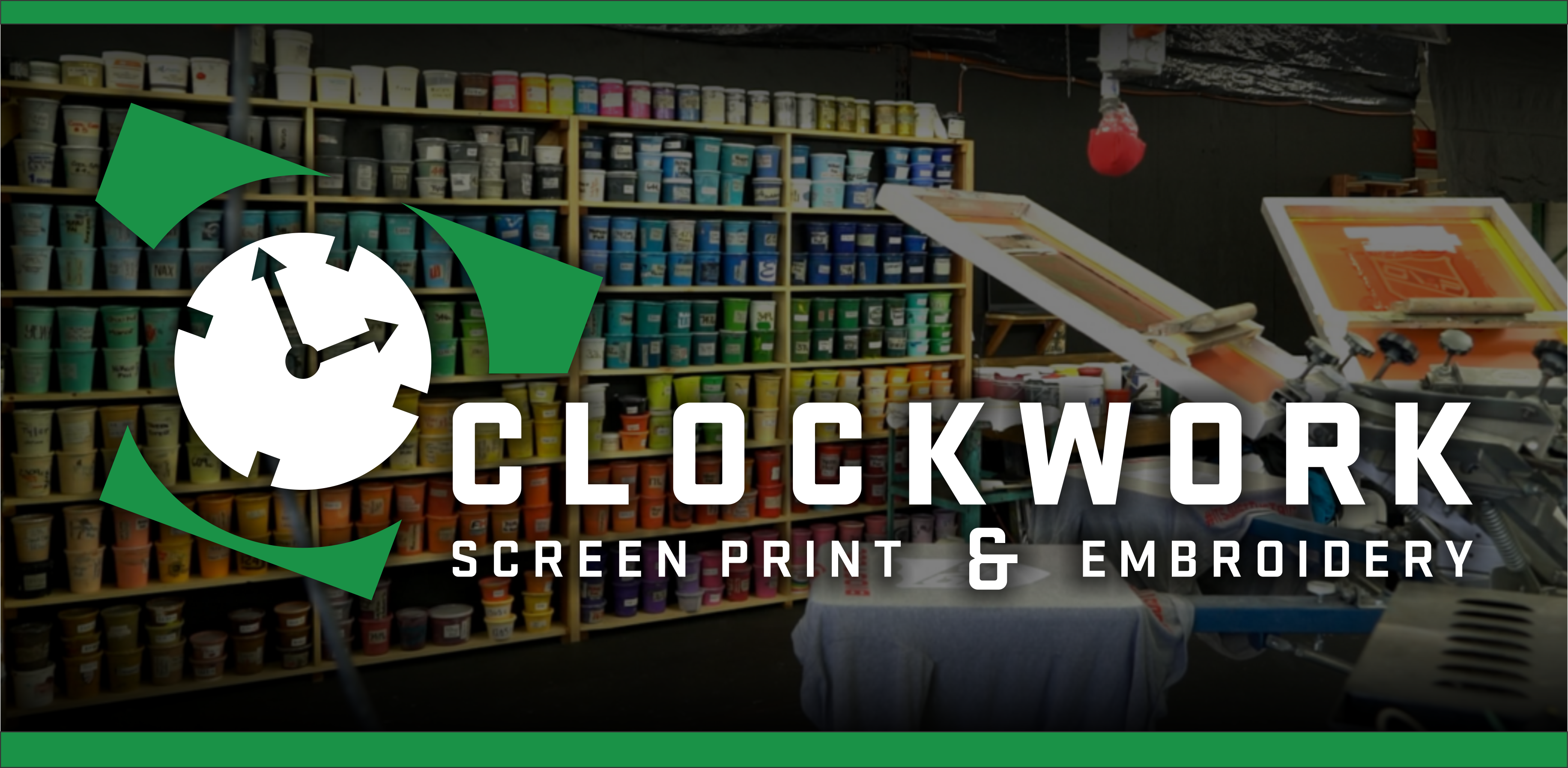
Clockwork Screen Print & Embroidery is a boutique, community-centric garment decorating business in El Segundo, California. Family-owned and operated by Dakota and Kimarie, they pride themselves on offering clients a customized experience that includes garment sourcing and various decorating techniques.
However, in their early days, they were turning down customers with complex jobs, including low minimums, hard-to-decorate locations, and high color counts.
Kimarie remembers one example. “A local little league needed custom jerseys for 300 players,” she said. “They wanted three designs, each in a different placement, for 15 teams – which meant only 20 impressions of each design.”
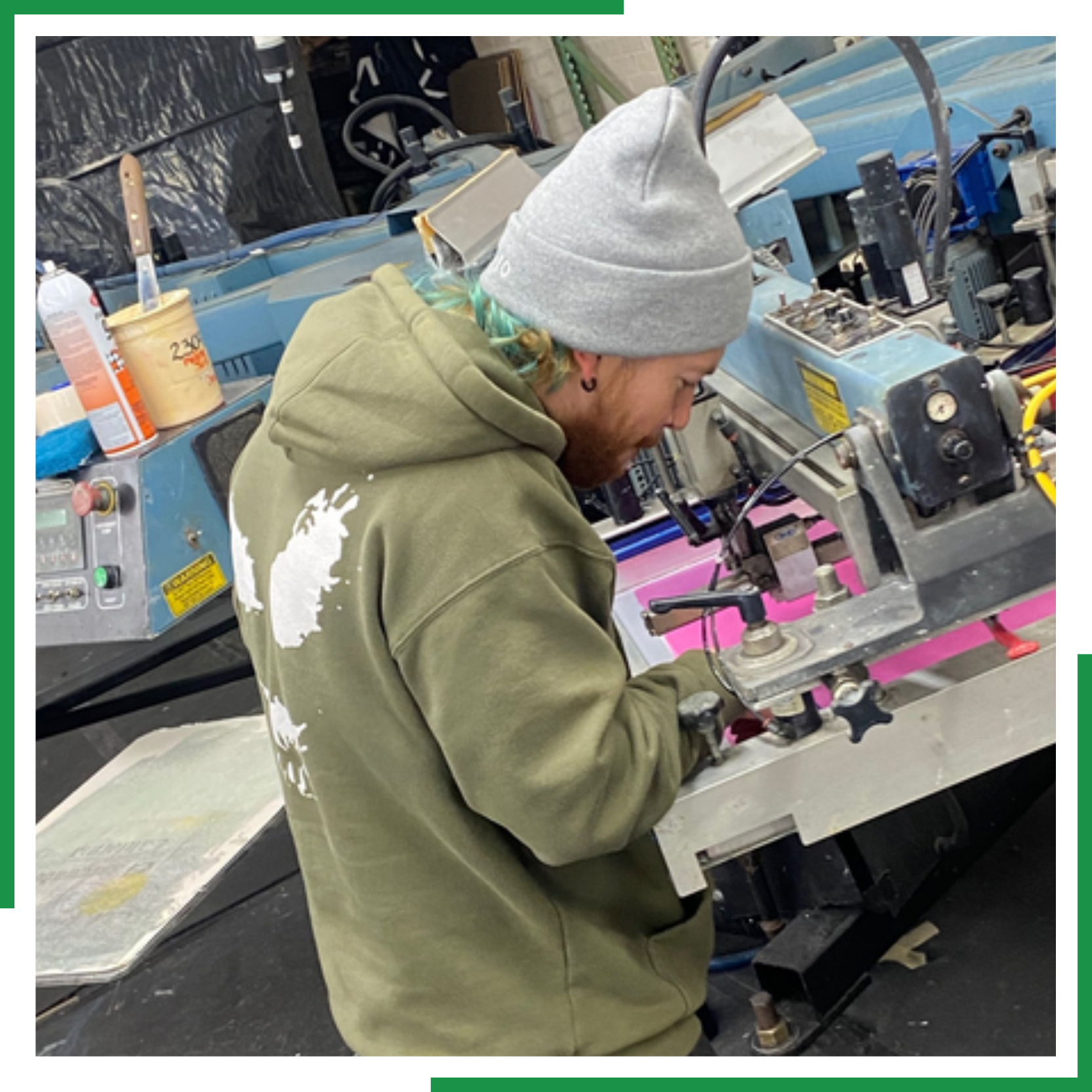
What initially sounded like a larger profitable job ended up being too complex for them to screen print. Priding themselves on serving their community, Dakota and Kimarie got to work looking for a solution for the little league. After some research, they decided heat transfers were the most viable solution because it would give them the flexibility to do the customization required at lower volumes. They explored manufacturers and eventually partnered with Supacolor.
Instead of turning the project down, they exceeded their customers’ expectations. Three years later, that little league is a seasonally returning client for Clockwork. And they’re not the only ones. That first project was the catalyst for them to grow their business using heat transfers. Today, Clockwork’s facility features a dedicated heat pressing department, which has paid dividends.
“Supacolor transfers are top-of-the-line quality, and their customer service is incredible. When they say they are here to help us grow, we really feel it. Whether it comes to providing technical resources or educational assistance, Supacolor truly functions as our business partner,” said Dakota, co-owner of Clockwork. “Our business has grown 15 - 20% annually thanks to Supacolor.”
Click HERE to learn more about Clockwork.
Keep up with Clockwork’s latest work by following them on Instagram.
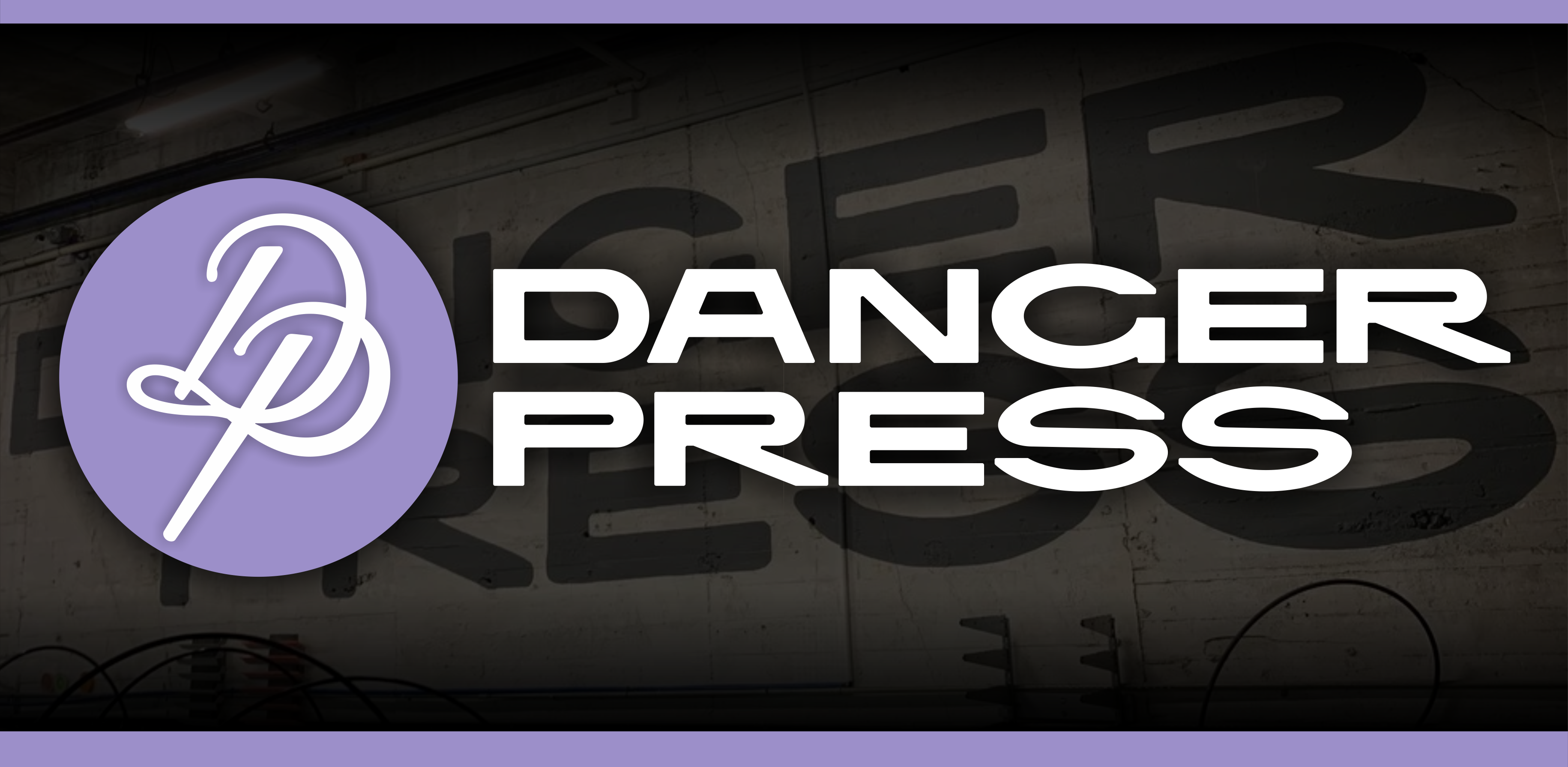
Based in Atlanta, GA., Danger Press is a prominent, full-service garment decorating business with capabilities including screen printing, heat transfers, live printing events, and drop shipping. Danger Press is considered one of the leading print business in the southeast region of the Untied States.
In 2007, Ed Jewell, the owner of Danger Press, was looking for a portable way to dry screen printed ink at live printing events. He took a shot at using a heat press and found it a viable solution. To Ed’s surprise, he discovered that it provided several other unexpected benefits, such as eliminating the need to first put down a white ink base. Heat pressing was saving him time and money.
This got Ed thinking. He realized that heat pressing. and digital printing techniques were on the verge of a breakthrough, and he did not want his business left behind.
Fast forward a few years, and Ed fully incorporated heat pressing into his printing arsenal.
“I use heat transfers as another tool in my tool belt. Without them, I’m not doing my best for my clients”, said Ed. “It’s nice to have mixed media options available for certain jobs. With heat presses, I have a lower investment in equipment and staff while
creating additional bandwidth for more jobs. Using a small 4'x4' area in my shop, I can now take on more business.
Small investment, significant return. “Bottom line, heat transfers let me serve my customers better.” Check out Danger Press and learn more about what Ed and his team do: https://www.dangerpress.com/
He said to me, “I’m so stressed out. I’ve been working fifteen and sixteen-hour days for weeks on end. I can’t seem to get off the work treadmill ever. I need help!”
Sound familiar? I hear something similar to that about twice a month or so from folks trying to build something fantastic. But unfortunately, these people start on a journey that somehow leads them down the road to chaos. By the time they talk to me, the frustration is overwhelming.
The good news is that it doesn’t have to be this way. There are some choices you can make to create something better. This could be for your business, personal time, or even a group or a team. Let’s take a look.
The first place to think about is your idea of what success should look like. Not where you are now. But if all things happen to be magically true, what is that ideal state? To me, the most important thing you can do is to try to be effective. This means that the work and the time you spend have meaning. I’d rather be doing the right thing poorly than doing an excellent job completing the wrong thing.
The reason? If you haven’t outlined what is essential, what matters, or what will make the most significant difference, are you just spinning your wheels? I’ve found out that “Ready, Fire, Aim” doesn’t achieve the desired results consistently.
I often hear business owners describing the hell they are going through, it is primarily a self-imposed problem. They don’t have a plan. There isn’t a direction. Nobody outlined the intended results and labeled what victory looks like. These people just bump along with their businesses until they have backed themselves into a corner one day.
“Now, what do we do?”. So, let’s unravel that knot. Three to five years from now, can you describe your business vision? What customers are you working with? What are your top and bottom lines in revenue? How many employees do you have? Describe your facility and equipment. How are you getting sales? How many different ways does your company make money?
Then, describe the downside. What problems are you going to face? Can you envision the quicksand to avoid? Technology that you need to adopt? Governmental regulations? Supply chain problems? Employee issues? Successful people know why these points matter. Believe it or not, there is such a thing as a “good order” and a “bad order.” There are “good customers” and “bad customers” as well. There are “value-added time” and “non-value-added time.”
This article is about prioritizing your time. I can tell you wholeheartedly that you should spend some quality time analyzing how you are spending your day. For example, are you working on tasks that will help you achieve your vision five years from now? Are the phone calls you are taking, the meetings you are lining up, and the production you need to schedule…are they in line with those goals?
Your vision drives decisions. Can you identify where you are mis-stepping with what you are working on? There are only so many hours in the day, so stop handing over a chunk of your day to things that will not help you realize your goals a few years from now. As my friend Richard Greaves says about time, “There are things that you can not afford to do.”
If you were to equate a minute to just one dollar, how much are you spending a day on non-essential, useless things? I read somewhere that the average worker only puts in about 3 hours of actual work a day in an eight-hour shift. The rest of the time was spent on “other things.”
What about you? Or your company? I want you to do yourself a favor and quit using the phrase, “I don’t have time.” From now on, replace that with, “That isn’t a priority.” Because that could be more accurate. You have the time; you simply haven’t prioritized it the way you should. Let’s find out.
The way forward is about identifying what is holding you back with how you use and prioritize time. Then, take a moment to do an audit. It’s not that hard, but it will take some effort. Whip out a yellow legal pad. Get a pen ready. For the next few days or weeks, jot down everything you do all day. What are you actually working on? How much time are you spending on it?
If we were working on improving a manufacturing process, this might be called a “Root Cause Analysis.” We want to uncover the facts about time management and what feeds into your day. Once your audit is completed, see if you can lump similar tasks together. Then, add up the total time for each. Can you express that as a percentage of the time available?
Once you have your list, take a good look at your activities. Rate each type of activity with a “K” for “Keep,” “G for “Give,” or “E” for Eliminate.
What do you like doing or feel you should be handling that task? That’s a “K.” You want more of those challenges, as this is where the payoff down the road will be. Keep doing this type of work, especially if you are highly skilled or enjoy it.
For anything that you can’t do well, don’t want to do, or can’t for some reason…you want to label that with a big “G” and give it away. These are tasks that you delegate. Can someone else on your team handle them? Could you find software to automate it? What about an outsourcing partner such as a virtual assistant or another company?
Lastly, and most importantly, we come to the Eliminator round. That’s right. You do things every day that you simply should stop doing. They get in the way of achieving higher levels of productivity. There should be things on your list that you’ve marked with a big fat red “E.” Let’s be honest here; you will have to find a way to be disciplined with some of these.
For example, I like Wordle as much as the next person. But let’s say that you spend 15 minutes every workday solving that puzzle. Here’s the math: 250 work days per year x 15 minutes = 3,750 minutes. 3,750/60 = 62.5 hours. What could you have possibly accomplished in 62.5 hours? I’ll bet a lot of things that someone once said, “We don’t have time for that.”
Remember that goal that is way over there on the horizon? That’s where we want to go. So it is possible to have the future that you’ve envisioned. But to have a different result than the one that isn’t working, you will have to do things differently.
The first step in the new plan is going to involve your ego. Or, maybe I should write it as YOUR EGO. Many times (hey, I’m guilty of this too), we feel that ONLY WE CAN DO IT. To untangle that knot, you will have to free yourself from this notion. Believe it or not, there are actually people on this planet who can do whatever that task is, just as good or, frankly, better than you can.
This is why you hire people. A few clicks away are some software that can entirely automate your struggling process. And yes, this is why you partner with a company that does something better than you. Like, for example, make heat-applied transfers.
But big egos don’t listen. People with big egos feel offended when someone corrects them. You’ve witnessed that before, right? Therefore, I wish you to put your ego aside and try something new. Remember, your goal is to make your day effective. Meaning that more good things are being accomplished with the available time committed. This doesn’t require your participation and involvement all the time. It can even be automated.
Can you clarify the results that you want before you start? Especially if you are handing something off to someone else? What is the intended outcome?
Prioritizing is about ranking what matters over what doesn’t. When you are clear about the results you want, this becomes much easier. Focus on the goal of being effective with your time, not being “busy.” Be more intentional. Every minute counts.
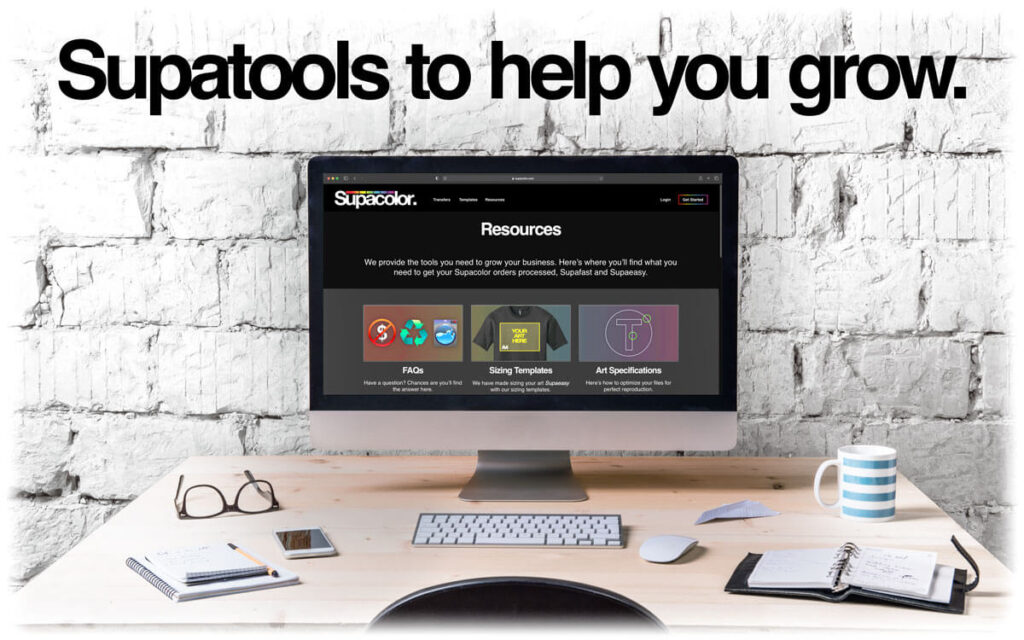
We're thrilled that you've joined the Supafam and we look forward to helping you make it in business and in life!
Helping people grow is an attitude that runs deep through our culture. We’re not just a heat transfer company, we're a partner that lets you focus on what you do best: creating, producing, designing, building, selling and succeeding.
Read on for Supatools to help you along your journey!
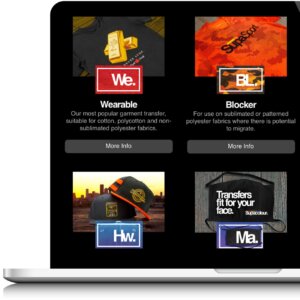
Supacolour comes in several different transfer types, each one uniquely designed for specific fabrics and garments.
Click the button below to learn more about The World's Best Heat Transfer.
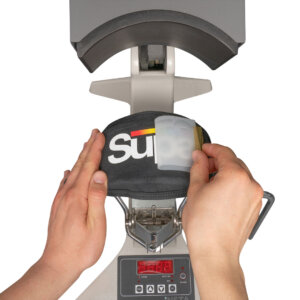
With Supacolour, anyone with a heat press can print garments like a pro.
Check out these pressing instructions to help you out along your way!

From tutorials on how to use our ordering software, to tips on growing your business and testimonials from our Supafam, we've got videos that will inform and inspire you.
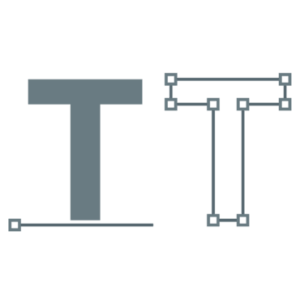
Supacolour renders incredible detail with crisp, clean edges in over a million vivid colors and gradients. Here’s how to optimize your files for perfect reproduction.